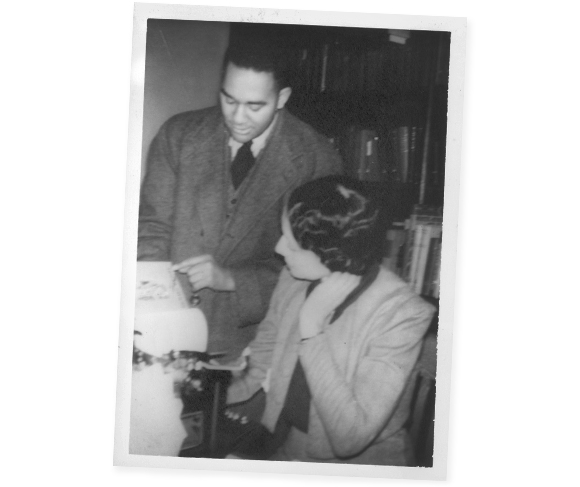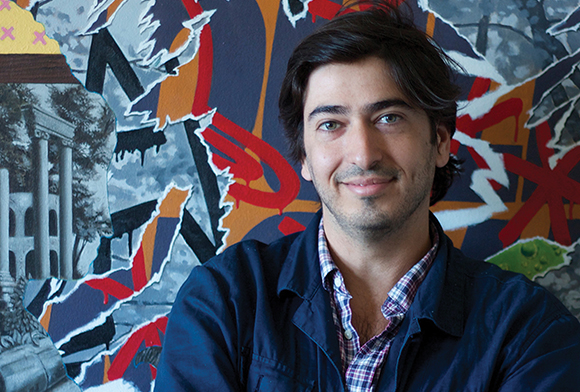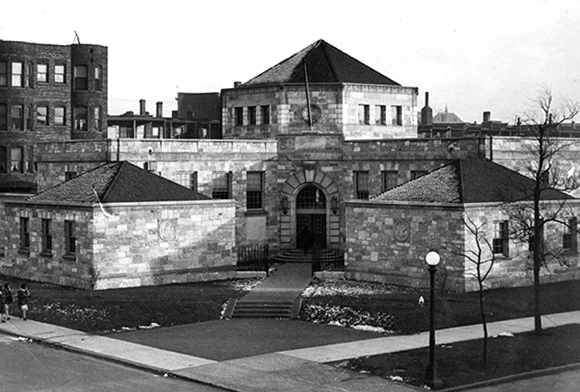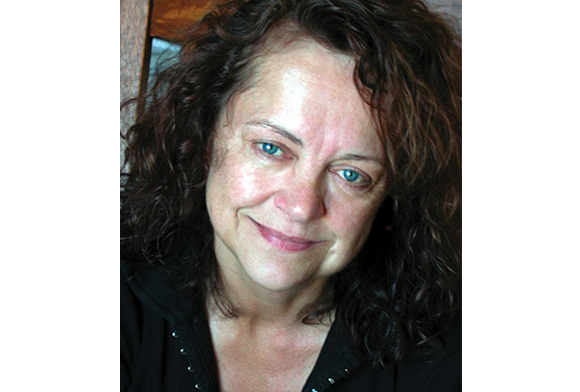
Unconventional core
In the spring, all kinds of things go on.
Jeanie Chung
As part of their Core requirements, College students must take two quarters of humanities. But all of the humanities sequences—which include Philosophical Perspectives, Media Aesthetics, and the people’s favorite, Human Being and Citizen—are three quarters long.
That means, for the students who choose to take the full sequence, spring quarter can look a little different. Professors have more scope to make the courses their own.
The Core dropped in on two classes where instructors took advantage of the opportunity to break out of the routine—and sometimes out of the classroom altogether.
It’s the seventh week of spring quarter. In Reading Cultures: Collection, Travel, Exchange, taught by assistant professor Zach Samalin, the class is discussing Richard Wright’s Native Son for the first time.
Samalin hands out an excerpt from a restrictive housing covenant of the type that would have been common in Chicago during the Depression. The text reads in part: “Said premises shall not, at any time hereafter, be sold, leased, or transferred to any colored person or persons, or to any person or persons of the Ethiopian or Semitic race, or to any descendant of either said races.”
For students born decades after the end of legal segregation, it’s a reminder of the world Bigger Thomas inhabits. He is metaphorically imprisoned by an entire political and economic system before his literal imprisonment for murder. But for some students, the reminder is less necessary.
One student tells the class that in Baltimore, where she grew up, a wall separates her neighborhood from a poorer neighborhood that was once legally designated for African Americans. “They actually did this back in the day, but you still see the effects today,” she says.
Samalin nods. “Chicago is the most segregated city in the United States,” he says, “and it’s in large part because this has had such a tectonic effect on the organization of the city.”
Sociopolitical issues notwithstanding, much of Bigger Thomas’s physical world no longer exists in Chicago. But some of Wright’s does.
The following Saturday, Samalin’s group and the other Reading Cultures sections—totaling about 50 students—board a yellow school bus that takes them to the South Side Community Arts Center in Bronzeville. The three-story brick mansion, built in 1892, was a private residence before the center was established there in 1940 by Margaret Burroughs. Burroughs, 22 at the time, went on to found the DuSable Museum of African American History.

Richard Wright presents an early manuscript to librarian Vivian Harsh of the George Cleveland Hall Branch Library. Students in Zach Samalin’s class Reading Cultures: Collection, Travel, and Exchange visited the library on a Saturday field trip. (Photo courtesy Chicago Public Library)
The students troop into a large drawing room where folding chairs are set up. Before showing a video about the center’s history, center staffer Natalie Battles gives some brief highlights. Gwendolyn Brooks used to write her poetry while seated at the piano located in the window bay facing the street. Photographer, filmmaker, writer, and musician Gordon Parks had his first darkroom in the building. And Wright was part of a writers’ group that met there.
The video tells the story of the center from its founding through the civil rights movement to the programming it offers today: children’s classes, musical performances, information sessions for aspiring art collectors. It also touches on communism, another theme of Native Son. The narrator points out that opponents sought to discredit white people who advocated on behalf of African Americans in the 1930s, ’40s, and ’50s by labeling them Communists. (Some—like Mary Dalton and Jan in the book—actually were.)
The most important message Battles wants the students to understand is the urgent need for an arts center serving the African American community during an era of both legal and de facto segregation. “We had no other place to go,” she says.
After the presentation, the students explore the center and look at the art hanging on its walls, some of which is for sale. There’s a cross section of periods and media; all the works are by African Americans.
Next the bus heads about a mile south down Michigan Avenue to the George Cleveland Hall Branch Library. Opened in 1932, it was Chicago’s first public library in a predominantly black neighborhood. Its original head librarian, Vivian Harsh, the city’s first African American librarian, was instrumental in convincing philanthropist Julius Rosenwald to donate the land. She amassed a collection of African American literature and history that became the largest in the Midwest and second in the nation only to the New York Public Library.
Wright, Brooks, James Baldwin, Lorraine Hansberry, and other prominent African American writers all did research in Harsh’s collection. Donna Morris, the library’s manager, urges the students to visit Carter G. Woodson Regional Library—where the collection is housed now—to do the same.
Bigger Thomas and his friends didn’t go to places like this. But they were essential for Wright.

Zach Samalin studies the literature and culture of the Victorian period. He is working on the book The Masses Are Revolting: Victorian Culture and the Aesthetics of Disgust. (Photo courtesy Zach Samalin)
About the instructor
Each quarter of Reading Cultures has a theme. Fall was devoted to collection, winter to travel. Spring is about exchange. “We’ve been thinking about different ways of organizing social relationships,” Samalin says, “with economic exchange, gift exchange.”
Required texts include Honoré de Balzac’s Le Père Goriot, The Marx-Engels Reader, Xiao Hong’s novel Field of Life and Death, and two films: Charlie Chaplin’s Modern Times and The Lunchbox, directed by Indian filmmaker Ritesh Batra. Through Native Son, the class is exploring the racial and economic inequalities that complicate a mutual exchange.
Despite the bright sunshine, on this particular day in Françoise Meltzer’s section of Readings in World Literature, she says, “it sort of feels like a world is ending.”
In the spring, Meltzer, the Edward Carson Waller Distinguished Service Professor in the Humanities, professor in the Divinity School and the College, and chair of the Department of Comparative Literature, teaches a course of her own design: The Nobel Prize in Literature, which is a section of Readings in World Literature. Today the class is wrapping up its discussion of Gabriel García Márquez’s Love in the Time of Cholera. They have spent five class periods—more time than for any of the five other books on the syllabus—discussing the magical realist tale.
The world García Márquez creates is that of Fermina Daza and Florentino Ariza, who fall madly in love at first sight as young people but remain apart for more than 50 years. In the meantime, Fermina marries Juvenal Urbino, a doctor who treats cholera, while Florentino has a succession of relationships of various lengths and intensities with hundreds of women, yet claims he has been faithful to Fermina in his true heart. The two finally become lovers after Urbino dies.
Meltzer asks the students how they liked the ending.
“I was actually really surprised they ended up being compatible,” says a short-haired woman. “Because their first relationship, we all agreed that it was based on very little. They never spoke; he just wrote her strongly worded letters.”
At the end of the book, the lovers are on a riverboat. Meltzer reads a passage from the riverboat captain’s point of view, “that it is life, more than death, that has no limits.” She asks the class what they think it means.
“On the one hand, it’s like, life is short, death is forever,” says a man in a blue T-shirt.
“That’s the usual view,” Meltzer says.
“But it’s really like, anything can happen in life,” he continues. “And only death limits that.”
“Where nothing happens,” Meltzer says. “At least as far as I know. But that’s a very good point. It’s a reversal of the usual way of looking at things.”

The George Cleveland Hall Branch Library, which opened in 1932. The library amassed the nation’s second-largest collection of African American literature and history. (Photo courtesy Chicago Public Library)
Despite, or maybe because of, the difficulty of grasping the emotional reality behind love and fidelity and aging and death for a group of people who are still mostly in their late teens, discussion is lively. Every one of the 14 students voluntarily participates, which Meltzer says is normal with this group but doesn’t happen with every class. The conversation touches on Freud, the young-adult novel The Giver, and one student’s interpretation of Florentino as a vampire.
As the class chuckles at this observation, Meltzer notes, “Well, actually his umbrella is referred to as a ‘bat’s umbrella’ and a ‘vampire’s umbrella.’”
“And he never sleeps!” one woman pipes up.
“But instead of blood he sucks love,” says the original proponent of the vampire idea, a man in a blue polo shirt. “I felt like this love is his life force.”
Later, Meltzer breaks the class into three groups, asking each to focus on one topic to present to the class. The first group will discuss love, the second aging, and the third anger and rage.
Love prompts the most unanswerable questions.
“We talked a lot about different types of love, and what love is and isn’t,” says a man with glasses. He reads a short passage that claims happiness is less important than stability. “Does there necessarily have to be happiness in a loving relationship? I don’t know if we came to a conclusion or not.”
A curly-haired woman chimes in: “We’re curious about the distinction between falling in love in old age and continuing to be in love at that age, and whether Fermina and Florentino went in with different expectations. Fermina falls in love with a new person. Florentino has maintained the same love from his teenage years.”
Later in the conversation, Meltzer asks, “Can you be in love with two people at the same time?”
“Depends on your definition of love,” a man in a tracksuit jacket says, expecting laughs—which he gets.
“Well, polyamory’s possible,” says a woman with blue-tipped hair. “It’s a thing.”
“You do realize, of course, that in music, art, literature, sociology, there is the narrative of love, true love,” Meltzer says, meaning monogamous love. “If you don’t function in that way, one response is, ‘I guess I wasn’t really in love.’ Another is, ‘It’s a myth.’” She notes that she’s glad a particular student is absent, “or he’d accuse me of making him depressed about marriage again.”
The students giggle nervously.
Meltzer adds, “I’m not saying it is a myth. I’m saying it’s still a question: What is love in the age of the cholera?”

Françoise Meltzer specializes in French and German literature and critical theory. Her work in progress focuses on ruins and the bombing of German civilians in 1945. (Photo courtesy Françoise Meltzer)
About the instructor
Françoise Meltzer has taught The Nobel Prize in Literature for about six years, swapping books in and out.
Toni Morrison’s Sula has become a constant because of its popularity with students. Cholera made its debut on the syllabus this year. The class also read Naguib Mahfouz’s The Day the Leader Was Killed, Patrick Modiano’s Dora Bruder, Orhan Pamuk’s The White Castle, and Mario Vargas Llosa’s Aunt Julia and the Scriptwriter. Meltzer has also taught poems and plays in the course, but found that novels work best.
During the last two classes, the students divide into six groups, one for each book. The rest of the class forms the Nobel Prize committee. Each group makes a presentation to the committee, explaining why its author should receive the honor—a process similar to the actual protocol for selecting Nobel laureates.
This year, García Márquez made the cut, but both Mahfouz and Pamuk were denied.
